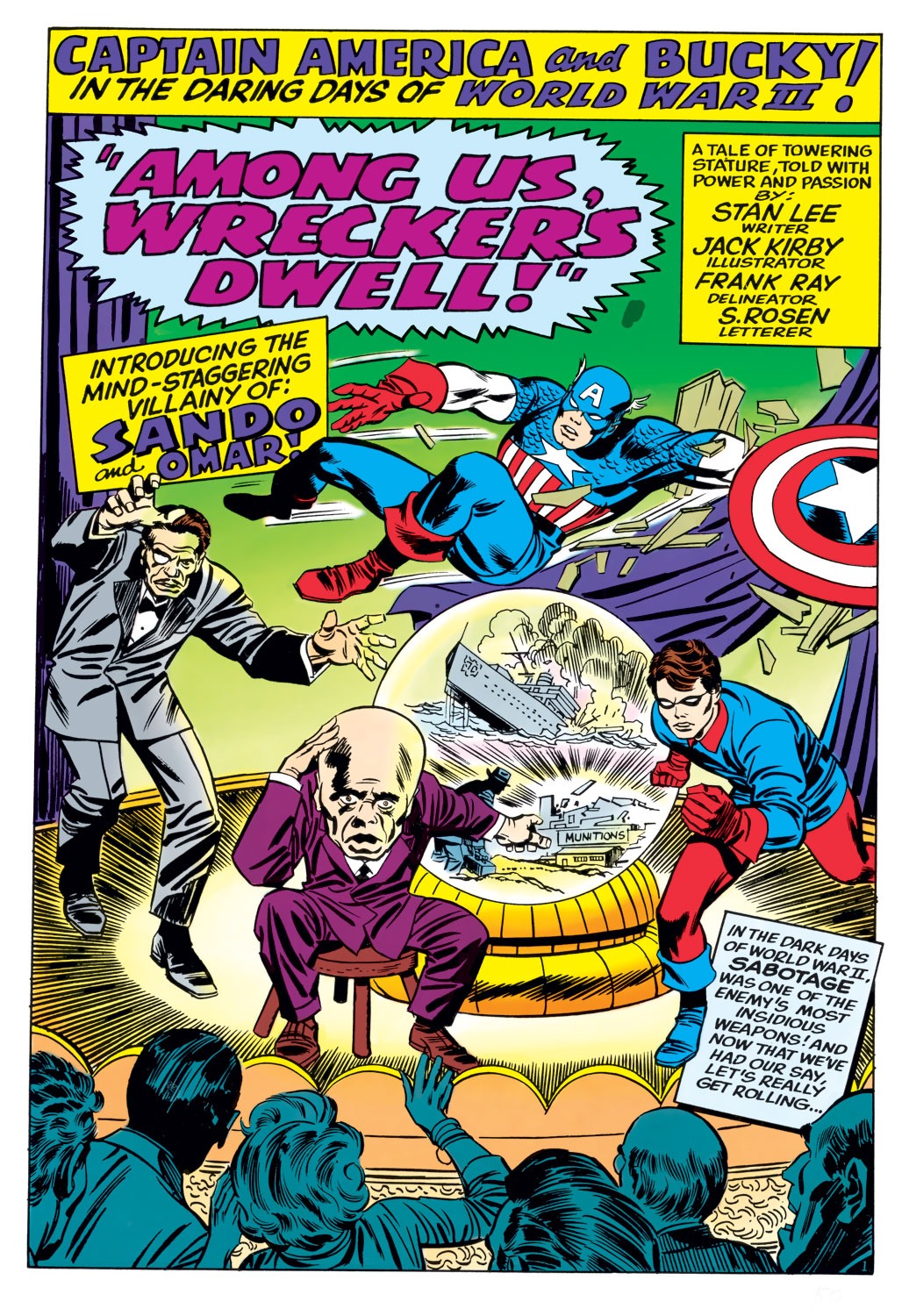Featuring: Young Allies
Release: July 23, 1941
Cover: Summer 1941
10 cents
57 pages
| Previous | Next | |
|---|---|---|
| Captain America Comics #3 | Prelude | Captain America Comics #7 |
| Sgt. Fury #16 | Reading order | Tales of Suspense #65 |
The table of contents lists Joe Simon as “Art editor” and Jack Kirby as “Art director”, while recognizing Carl Burgos as the creator of Toro. No hints as to who actually wrote or drew the comic are given. The GCD credits Otto Binder, Charles Nicholas, and Syd Shores, noting Jack Kirby supplied art for some of the chapter-opening splash pages. The cover is by Jack Kirby and Syd Shores.

We also take the on-sale date from the GCD, which disagrees with the July 10 date given in Mike’s Amazing World, but also offers an explanation for the discrepancy.
An ad shows an earlier version of the cover (and gives the July 10 release date). Notice in the original cover, Stalin is one of the villains (along with Hitler, Tōjō, and Mussolini). This comic was released in July 1941. Between its original advertisement and publication, Germany invaded the Soviet Union, so Stalin was now a good guy, and couldn’t be depicted as evil in the comic. The USSR was now part of the Allied forces.

America remained neutral in the war, but you couldn’t tell by the comic books.
We read the introduction of the Young Allies, a painfully long 57-page adventure. Our motivation is that this is the third appearance of the Red Skull, who was presumed dead in an explosion in Captain America Comics #3.

This comic is pretty rough reading. The most infamous part of it is the character of Whitewash Jones, a painful stereotype of an African American child, whose portrayal somehow keeps getting worse as the issue progresses. Even leaving aside that racial sentiment has evolved in 80 years, the other kids are also pretty awful characters. Tubby, the obese child, is portrayed no better. Nor is Knuckles, the street-tough kid. Jefferson, the nerd, probably comes off the best.

The history of cartooning is built on caricature and exaggeration, but these four kids just push it into the absurd and unreadable.
Continue reading “PRELUDE: Young Allies #1”



































